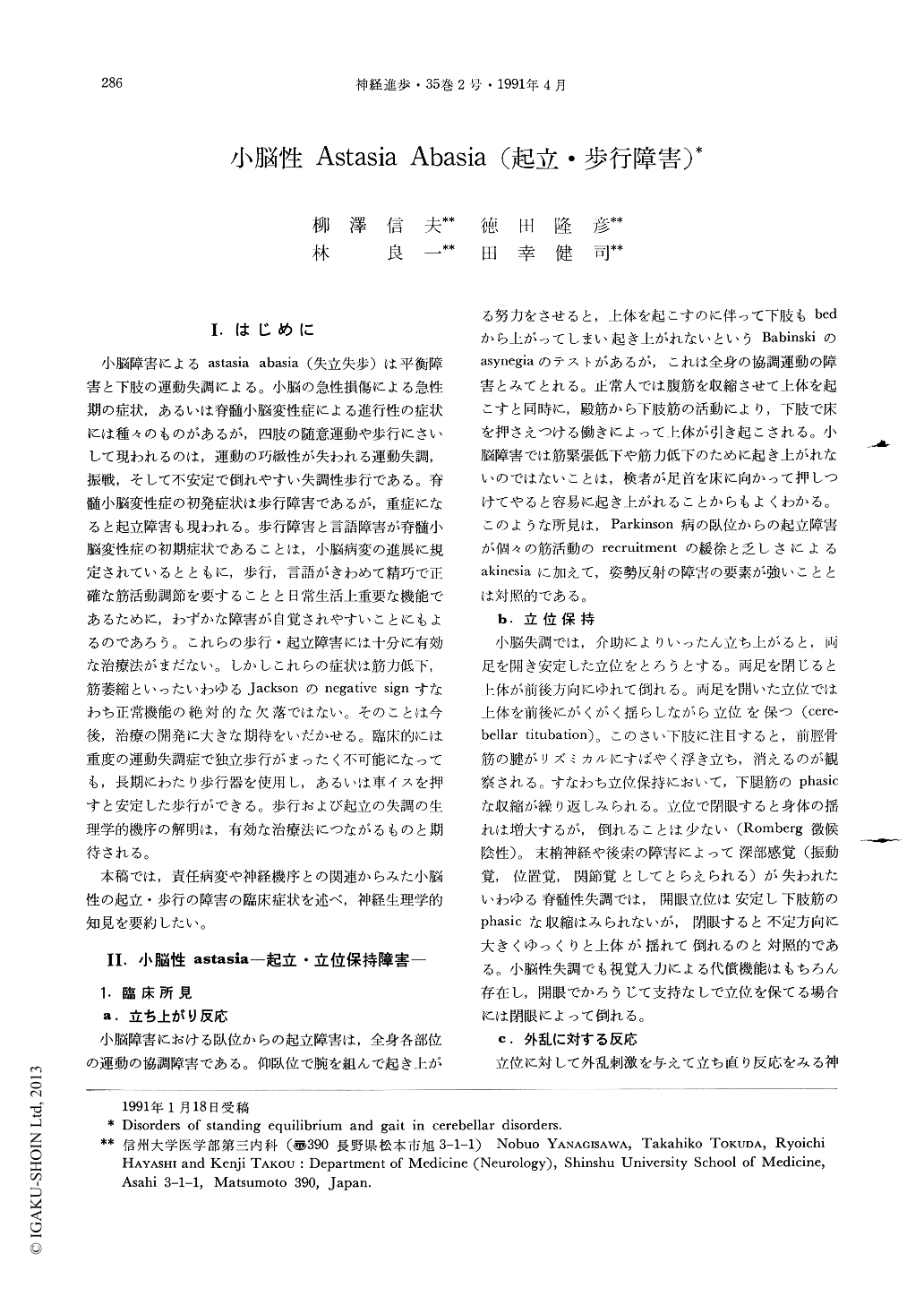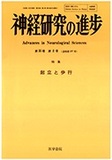Japanese
English
- 有料閲覧
- Abstract 文献概要
- 1ページ目 Look Inside
I.はじめに
小脳障害によるastasia abasia(失立失歩)は平衡障害と下肢の運動失調による。小脳の急性損傷による急性期の症状,あるいは脊髄小脳変性症による進行性の症状には種々のものがあるが,四肢の随意運動や歩行にさいして現われるのは,運動の巧緻性が失われる運動失調,振戦,そして不安定で倒れやすい失調性歩行である。脊髄小脳変性症の初発症状は歩行障害であるが,重症になると起立障害も現われる。歩行障害と言語障害が脊髄小脳変性症の初期症状であることは,小脳病変の進展に規定されているとともに,歩行,言語がきわめて精巧で正確な筋活動調節を要することと日常生活上重要な機能であるために,わずかな障害が自覚されやすいことにもよるのであろう。これらの歩行・起立障害には十分に有効な治療法がまだない。しかしこれらの症状は筋力低下,筋萎縮といったいわゆるJacksonのnegative signすなわち正常機能の絶対的な欠落ではない。そのことは今後,治療の開発に大きな期待をいだかせる。臨床的には重度の運動失調症で独立歩行がまったく不可能になっても,長期にわたり歩行器を使用し,あるいは車イスを押すと安定した歩行ができる。歩行および起立の失調の生理学的機序の解明は,有効な治療法につながるものと期待される。
本稿では,責任病変や神経機序との関連からみた小脳性の起立・歩行の障害の臨床症状を述べ,神経生理学的知見を要約したい。
Standing and maintenance of an upright posture are disturbed by lesions of the cerebellum especially of the anterior vermis or flocculonodular lobe. Gait disorders are the first and main symp-toms of the alcoholic cerebellar disease and of the subacute cerebellar degeneration associated with neoplasm.
Center of foot pressure measured by floor reaction forces on standing shows center of gravity of a standing subject. Normal subjects show irregular sway in fore-aft direction within 5 cm. Closing eyes increases the range of sway. Patients with spinocerebellar degeneration (SCD) showed range of change of center of foot pressure wider than normal and eye closure results in increase of the area of change of body sway in fore-aft and lateral directions. In chronic diseases affecting the anterior lobe of the cerebellum, fore-aft oscillation of the body at a rate around 3 Hz is characteristic.

Copyright © 1991, Igaku-Shoin Ltd. All rights reserved.


